Acer's Iconia W700 Ivy Bridge Windows 8 Tablet: The Start of Something Big
by Anand Lal Shimpi on June 9, 2012 12:45 PM EST- Posted in
- Trade Shows
- Acer
- Intel
- Mobile
- Windows 8
- Tablets
- Computex 2012
My first meeting of Computex wasn't a meeting at all, rather it was Acer's press conference a day before the show officially started. In its press conference, Acer introduced a top to bottom lineup of touch enabled Windows 8 devices.

Among the list were two particularly interesting tablets: the Iconia W510 and W700. The former is an Atom (Clovertrail) based tablet with Transformer-style keyboard dock, while the latter is a full fledged Ivy Bridge based tablet. On my last day in Taipei I managed to secure some extended hands on time with the W700. I'm always asked what I was most impressed by at any trade show, and I'd have to say for this Computex it was definitely Acer's W700. It's not just a good device, but it's also the start of something very big.
At first glance Acer's entire Windows 8 lineup looks significantly improved from the company we knew just a few months ago. There's a lot more attention paid to styling, ergonomics and the user experience of these new Windows 8 devices. For example, where we could once complain about subpar displays, the W700 puts an end to that with its 11.6-inch 1080p IPS panel.
The W700's build quality is excellent, however the handful of devices that exist in the world today were all hand built. I was surprised to find fairly polished Windows 8 tablets at Computex, and it turns out I was right to be surprised. Everyone worked overtime to get devices ready by Computex, in most cases resorting hand building prototypes to the tune of $10K a piece. What we saw at the show is by no means ready for retail. You can expect the final materials list, thickness and weight to improve by the time it launches. And yes, the W700 will be a launch vehicle for Windows 8.
Performance: Much Better than an ARM Tablet
It's no surprise that Acer was able to pull the W700 off, word has it that Intel itself offered a lot of help with the design and optimization of the W700. It's not uncommon for Intel to help its partners. In the past it has done so for Apple. In this case Intel has a vested interest in making sure that more than just Apple are able to produce compelling products in the market. Apple's Tim Cook understands the supply chain very well. As Intel is one of the largest if not the largest consumer of cost in Apple's Mac bill of materials, it runs the risk of facing cost "optimization". Intel's aid to Acer can be viewed as diversifying its portfolio if you will.
The W700 is understandably fast. Intel isn't talking about CPU specifics, likely because the final configuration isn't decided yet. There's clearly an ultra-low voltage Ivy Bridge inside but I suspect this is more than just another Ultrabook chip. For the launch of the original MacBook Air Intel introduced a small form factor package and specially binned low-power CPU/chipset combination to meet Apple's design requirements. I bet Intel has done something similar here for Acer (maybe not on the packaging side, but definitely when it comes to silicon).
Even running a well underclocked Ivy Bridge it's far smoother and more capable than any ARM or Atom based tablet. As Metro is designed to be responsive on much slower hardware, it simply flies on Ivy. There are still a number of rough edges that Microsoft needs to work on. The Windows 8 release preview isn't as polished and consistently smooth as iOS is, but I suppose that's why it's a release preview and not a final build of the OS. As long as Microsoft focuses on delivering consistent UI behavior (not just frame rate) across the board I see no reason Windows 8 can't do exactly what iOS has done.
The CPU is actively cooled, but in my use of the device I couldn't hear the fans nor did the tablet ever get uncomfortably warm. Admittedly I didn't try editing anything in Photoshop or run Cinebench on the machine.
Wireless and Ultra Fast Storage
Connectivity is very well done on the W700. While Acer isn't talking about wireless options, there's a plastic strip across the aluminum back that could be home to more than just WiFi antennas. If Acer wants to charge a premium for the W700, it needs to be able to offer LTE and GPS similar to the higher priced iPads.
Thanks to Ivy's 7-series chipset there's a single USB 3.0 port on the tablet itself. Acer isn't talking about what specific storage is used inside, but storage performance should be significantly better than what you're used to from a conventional ARM based tablet with a single piece of NAND. Intel copied a bunch of 36MP images from a Nikon D800 over USB 3.0 to the W700's internal storage. Not only did the transfer go extremely quickly (think notebook quick, not tablet quick), but flipping through the 36MP JPEGs was as fast as you'd expect from a desktop. Occasionally the system would take a second or so before the displayed image became sharp, but that only happened when flipping through a folder of images very quickly. The W700 is basically a laptop without the keyboard - you can expect it to have laptop hardware inside.
The W700 doesn't have the optional keyboard dock of the W510, likely because it would be too top heavy. Acer does make a presentation dock that you can use with a wireless keyboard. Either Acer or third party manufacturers could build a case with integrated keyboard similar to what exists for the iPad today.
Here's where things get exciting. The Iconia W700 has a Thunderbolt port. It could theoretically serve as a tablet, that's also a notebook that's also your desktop. Local storage will be limited to whatever is inside the chassis, but you could easily have an external disk array giving you terabytes of high-speed local storage when in desktop mode. Remember the old holy grail that we once believed we had to rely on the cloud for: all your content, any time, any where. With the W700 as your tablet, notebook and desktop, by default you get almost all of that without ever relying on a wireless connection.
You could even theoretically have an external discrete GPU connected via Thunderbolt using something like MSI's GUS chassis. While I seriously doubt we'll see this in time for launch (or during the W700's lifespan), it is possible to experiment with docks that would enhance cooling, allowing Ivy Bridge's configurable TDP to go to work.
Final Words
The W700 is admittedly thicker than I'd like. It's comfortable to hold but you can't one-hand it for long and it's best used when propped up against something like your leg or the edge of a table. Haswell should help thin things out - and 14nm Broadwell will put the issue to rest entirely. Even with just Ivy Bridge however, the W700 is the beginning of something special. An ultra portable device that can truly serve as everything from a tablet to your desktop. I don't know that the W700 is an iPad competitor, but it will offer an option for those users who want to consolidate their devices.
Pricing is unknown, however Acer and Intel are currently working on optimizing the design to make it price competitive with the higher end iPad configurations. The slide above has the W700 starting somewhere around $799 and going up to $999. The latter I believe is too high. If Acer can deliver the W700 with LTE, Thunderbolt and a a 64GB SSD for $799 I think it's an easy recommendation.
The onus is on Microsoft to quickly enable compelling Metro applications. At the introduction of the new iPad with iPhoto, Apple talked about the tablet being a great tool for photographers to quickly preview and do minor edits on photos while on location. The W700 and similar tablets running Windows 8 could be that and more, but Microsoft needs the right applications to take advantage of it. The amount of marketing muscle Microsoft is putting behind Windows 8 and Metro apps, combined with the sheer power of tablets like the W700 gives me hope that app developers will quickly flock to the platform to really take advantage of it.
The world is changing and for the first time in years, Microsoft and Intel appear to be the ones leading that change.


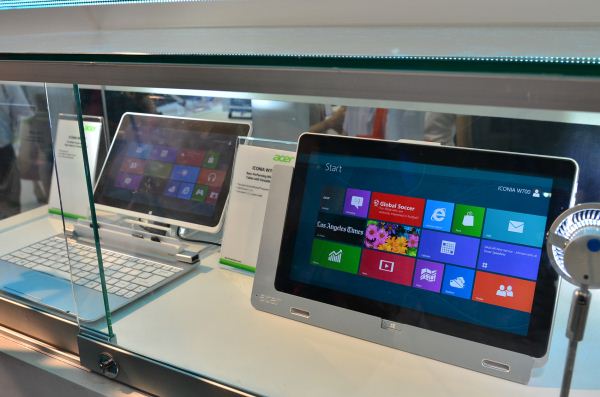






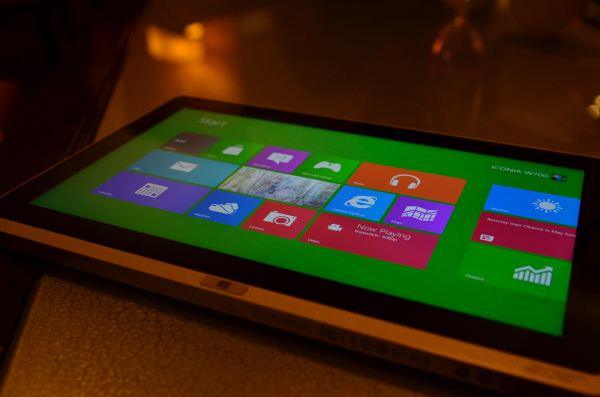

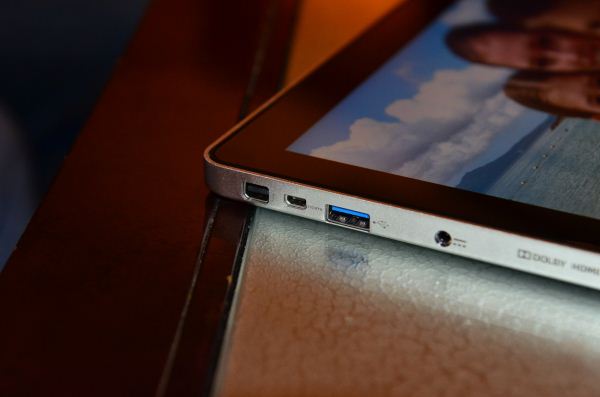
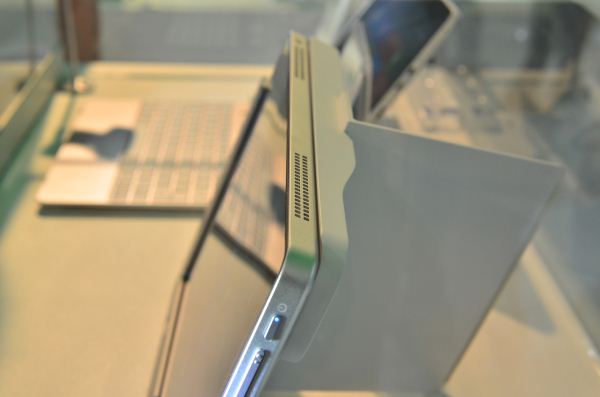
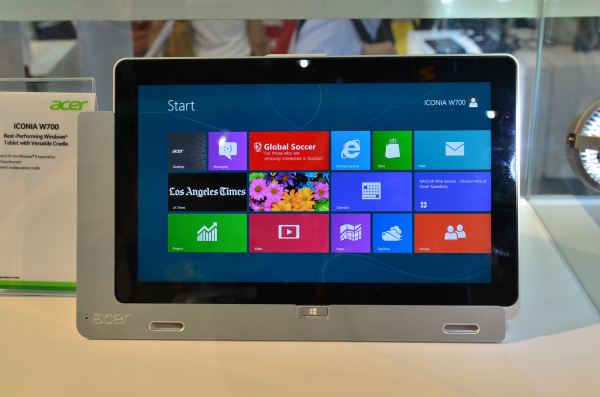








141 Comments
View All Comments
DigitalFreak - Saturday, June 9, 2012 - link
The Acer guy said 8 hours in the video, so...Lucian Armasu - Monday, June 11, 2012 - link
The "laptop guys" always exaggerate their battery life. ALWAYS.It's usually half of what they are saying. Have you owned any recent laptop with that kind of a resolution that can last you 8 hours with heavy use?
Because the iPad and Android tablets can actually last you 10 hours or more of HEAVY USE - not idling with the screen on, which is what these manufacturers mean when they say "our laptop/tablet lasts 8 hours".
BigBear123 - Monday, June 11, 2012 - link
You must not own an iPad or Android tablet because they absolutely do not last the 10 hrs from heavy use. I watch youtube and surf the internet quite frequently (refreshing websites, etc...). In no way has my iPad 1 or my GF's iPad 2 ever lasted the advertised 10 hours.Android tablets and iPads are toys anyways. As soon as touch Ultrabooks come out, I'm ditching the iPad.
lilmoe - Saturday, June 9, 2012 - link
you guys need to tell me where the you get crystal balls from!Romberry - Saturday, June 9, 2012 - link
Bet ya that yes, way. MS has gone to great lengths to make Win 8 more power efficient*, and I expect that 7+ hours is not unreasonable. We're getting that kind of battery life under Win 7 on some ultrabook class machines already. Can't see why Win8 won't be capable of at least the same.*The recent news about dropping Aero Glass from the release version of Win 8 came about precisely because of the power saving advantages.
Jaybus - Tuesday, June 12, 2012 - link
Umm they aren't using a 77 W quad core desktop processor. It will likely be a special ULV chip with a TDP even less than the already announced i5-3317U, which itself is only 17 W including HD4000 graphics. It will also use a ULV 7-series chipset and mobile RAM and NAND parts, and of course speed step.Also, the 7 hours means 7 hours at "normal" work loads, not max work load. That is true for any battery life spec from any manufacturer. Think of it this way, at the same work loads, an ARM or Atom tablet will be maxed out before this IVB tablet is even breathing hard.
UpSpin - Saturday, June 9, 2012 - link
For such a high price they have to offer more than just Windows 8 on x86, because, as we all know, the tablet specific app selection will be tiny compared to iOS or Android the first few months (or maybe years)What I miss: Pen input.
Else it looks like a great device. Perfect display, powerful hardware.
The fact, that this tablet requires active cooling speaks against power efficiency and long battery life of the Intel Ivy Bridge processors, sure, they can add a huge battery to compensate this, but this makes the tablet only heavier, and a fan is always noisy and has nothing lost in modern tablets.
Still, nice tech demo. Because this tablet will be available by the end of 2012 soonest, I believe that they can mass produce such a product at the end of the year and don't have to hand select the components any longer.
But the biggest drawbacks: power ineffcient, thus either short battery life and lightweight or long battery life but heavy, and the lack of the must-have Windows tablet PC feature: pen, must get solved, especially if they want that much money.
Romberry - Saturday, June 9, 2012 - link
Quote: "the tablet specific app selection will be tiny compared to iOS or Android the first few months"Response: So? I hear that "number of apps" thing all the time, but it strikes me as essentially meaningless. What proportion of the available apps are widely downloaded and used on either iOS or Android? There may be many thousands of apps, but only a relative few are popular and in wide use.
UpSpin - Sunday, June 10, 2012 - link
you're right, but the same applies to the WP7 app store. Bigger apps need more development time and ressources. Because an app store only has few apps, doesn't mean that those few apps are of high quality.The more apps are available the more likely it gets that more high quality apps are available there, too, because more people develop for it, because more people think they can make money from this particular app store.
So if the percentage of good apps remains constant (which I believe by looking at iOS and Android market and the lack of support of apps in the WP7 market which are highly supported on iOS and Android) WP market has only very very few.
moshj - Sunday, June 17, 2012 - link
People said the .Net Framework would not catch and Java would rule. Now .Net programmers are in greater demand and earn more.Once Win8 becomes GA, the developers will develop for it and the Windows App Store will explode. If there is one thing Microsoft has always done very well, it is provide the right tools and APIs to get developers working fast. You can develop for App Store now, and many are already doing it. But many are also waiting to develop against the a final RTM version of Win8.
Come 2012 when all new non Apple, laptops and desktops are shipping with Win8, there will be a rapid explosion of Win8 apps. It's history repeating.